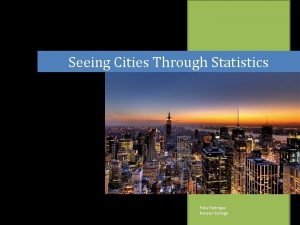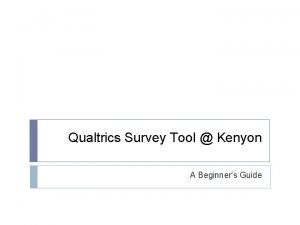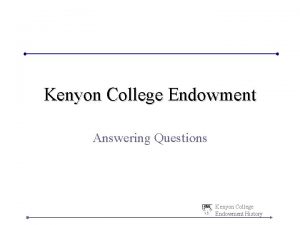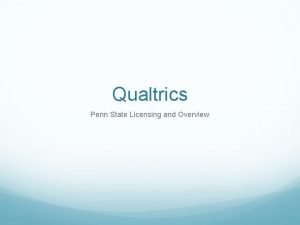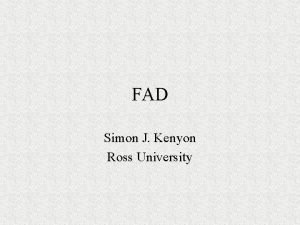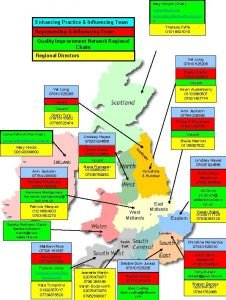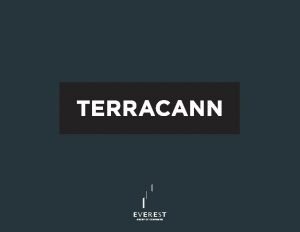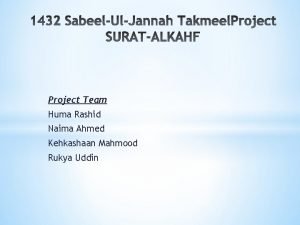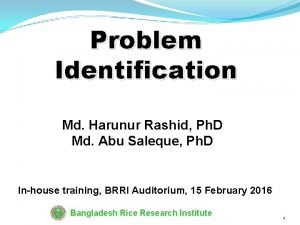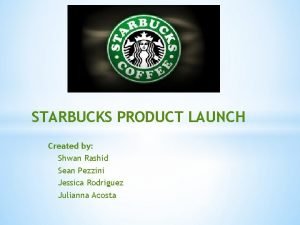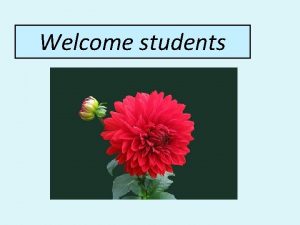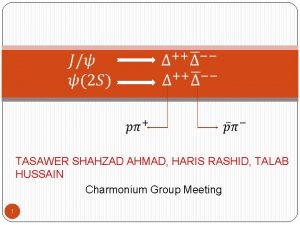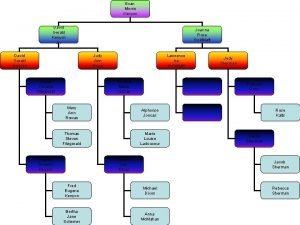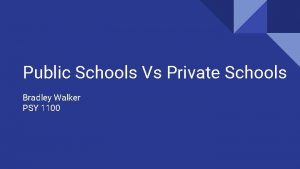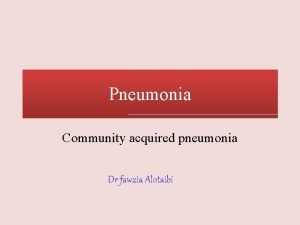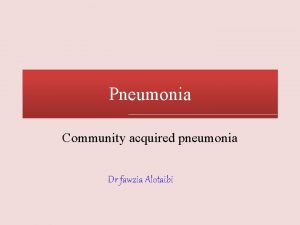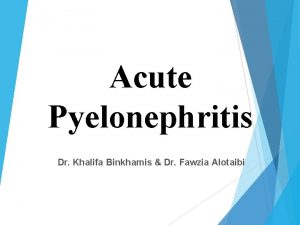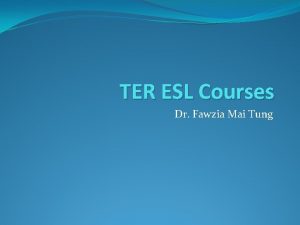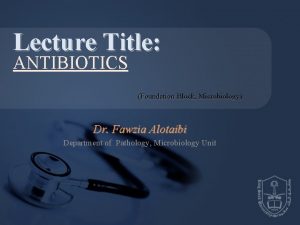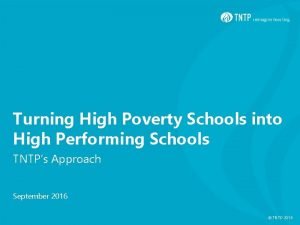Technology in High Schools Kenyon Walker Fawzia Rashid


















- Slides: 18

Technology in High Schools Kenyon Walker & Fawzia Rashid

Our Goal o o Introduce and define high tech high schools Discuss the learning theory and learning strategies that support high tech schools Discuss exemplary models Discuss challenges of high tech high schools

Our Approach o o o Literature Reviews Scholarly Research Articles Books & Journals Multimedia Presentations Site visit to Forest Park High School

Common Attributes of High Tech High Schools Student Learning Real-World Curricula Professional Development Community Support

Technology Applications o o o o Computer-Based Instruction Simulations and Games Programming Multimedia Networking and Distance Learning E-Learning Virtual Reality Dale H. Schunk, Learning Theories: An Educational Perspective

Benefits of high tech high schools o o o Strengthens academic and career skills Increases technical skills Facilitates professional development for faculty and staff Helps students relate to real world Improves higher order thinking skills in reading, writing and mathematics Gene Bottoms, High Schools That Work

Distributed Cognition q o Curriculum must be meaningful in order for the learner to apply to the real world Learning must be embedded in an activity so the learner would draw upon his/her social and physical contexts John Seely et al

Principles of Distributed Cognition o o Activity, culture and concept are interdependent Social interaction and collaboration between learners is fundamental to building knowledge Learner’s negotiate meaning and construct knowledge to understand the world around them Authentic activity provides experience, which is important to subsequent action later on life

Cognitive Apprenticeship Peer Apprenticeship n Learners generate their own solution paths through o authentic practices and social interaction o Problem-based learning o Exploration David Hung & Maish R. Nichani

Constructivism Theory that is based on: q q q Learners constructing knowledge for themselves Learning bringing forth their own understanding of the world Learners search for symbolic representations to relate to their world Priscilla Norton & Karin Wiburg

Traditional Learning Constructivist Teachers present: student listen Teachers facilitate; students do, present, think, and construct Working together is cheating Working together facilitates learning and problem solving Subjects are presented separately Subjects are integrated into a learning whole. Learning is fact-centered Learning is problem-centered The teacher is the source of all knowledge There are many rich resources for learning Print is the primary source of information Concepts are explored using a variety of communication tools Assessment is based on how much is Assessment is based on each student’s memorized and can be given back to the developing abilities to solve problems, teacher communicate ideas, present information and learn how to learn Schools are isolated and separate from the rest of the community Technology connects the world to the classroom and the classroom to the world Priscilla Norton & Karin Wiburg

Multi-dimensional Learning Community Student Learning Real-World Curricula Professional Development Community Support

Implementation Model High Tech High School o Located in CA, Aprox. 400 students o School is Based on Three Principles n n n o Technology in use n n n o Personalization Adult-world connection Common intellectual mission Multimedia tools Graphics software Access to the Internet for project-related inquiry Advanced networking and system engineering Cisco Networking Academy Program Emphasizes n n n Team teaching Integrated curriculum Project-based learning Community-based internships Presentation and exhibition Student Learning Real-world curricula Professional Development Community Support

Implementation Model Quaker Valley High School o o Located in Sewickley, PA Technology that are in use n laptop computer, equipped with software and wireless Internet connectivity. n Enabling the students to use the Internet in any classroom Projects n Refurbishing and distributing n "Guide on the Side" n "Ace in the Hole“ Student Learning Future Goals n Credit for community service learning hrs. Real-world curricula n Collaborating with the (PHENND) Professional Development n Organizing an annual Pennsylvania Youth and Technology Service Learning Conference. Community Support

Implementation Model Forest Park High School o Located in Woodbridge, VA o IT Program include n n n o Technology in use Multimedia tools Graphics software A+ Curriculum Cisco Networking Student Learning Program Emphasizes Real-world curricula n n o Multimedia Certificates College credits Serve and learn n n Team teaching Integrated curriculum Project-based learning Community-based internships Presentation and exhibition Professional Development Community Support

Implementation Model Mount. Lake Terrace High School o o o Located in WA Technology in use n Multimedia tools n Graphics software n Access to Professionals Program Emphasizes n Integrated curriculum n Problem-solving learning environment n Presentation and exhibition n Collaboration, and communication n “Hands-on” real world application Student Learning Real-world curricula Professional Development Community Support

Challenges to technology use o o o Professional Development Disconnect between administrators and teachers Pressure for teachers to meet or exceed expectations on highstakes tests Technology access Cultural integration

WWSF PROJECT Vision: to enhance the experience of teachers and students through the integration of technology. Mission: to conduct research to determine the best practices of technology in high school, with special attention to communities of practice and after-school programs. Student Learning Real-world curricula Professional Development Community Support
 Kenyon walker
Kenyon walker Pete kenyon
Pete kenyon Land surveyor kenyon
Land surveyor kenyon Kenyon college endowment
Kenyon college endowment Mark kenyon net worth
Mark kenyon net worth Psu.qualtrics
Psu.qualtrics Simon kenyon 68 instagram
Simon kenyon 68 instagram Ksol uk
Ksol uk Huntsville city schools powerschool login
Huntsville city schools powerschool login Reach target safety
Reach target safety Terracann
Terracann Kehkashaan
Kehkashaan Dr haroon ur rashid
Dr haroon ur rashid Problem tree
Problem tree Shwan rashid
Shwan rashid Shwan rashid
Shwan rashid Rashid chotani
Rashid chotani Dr haris rashid
Dr haris rashid Rashid chotani
Rashid chotani

